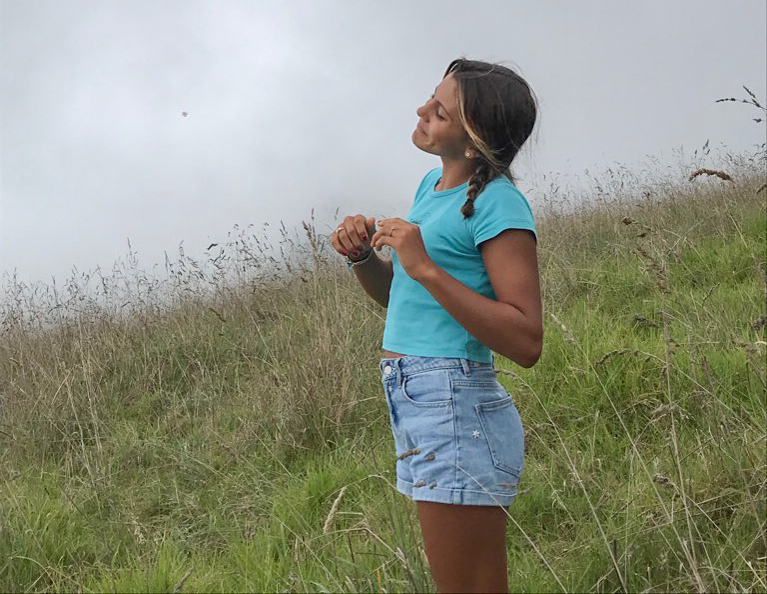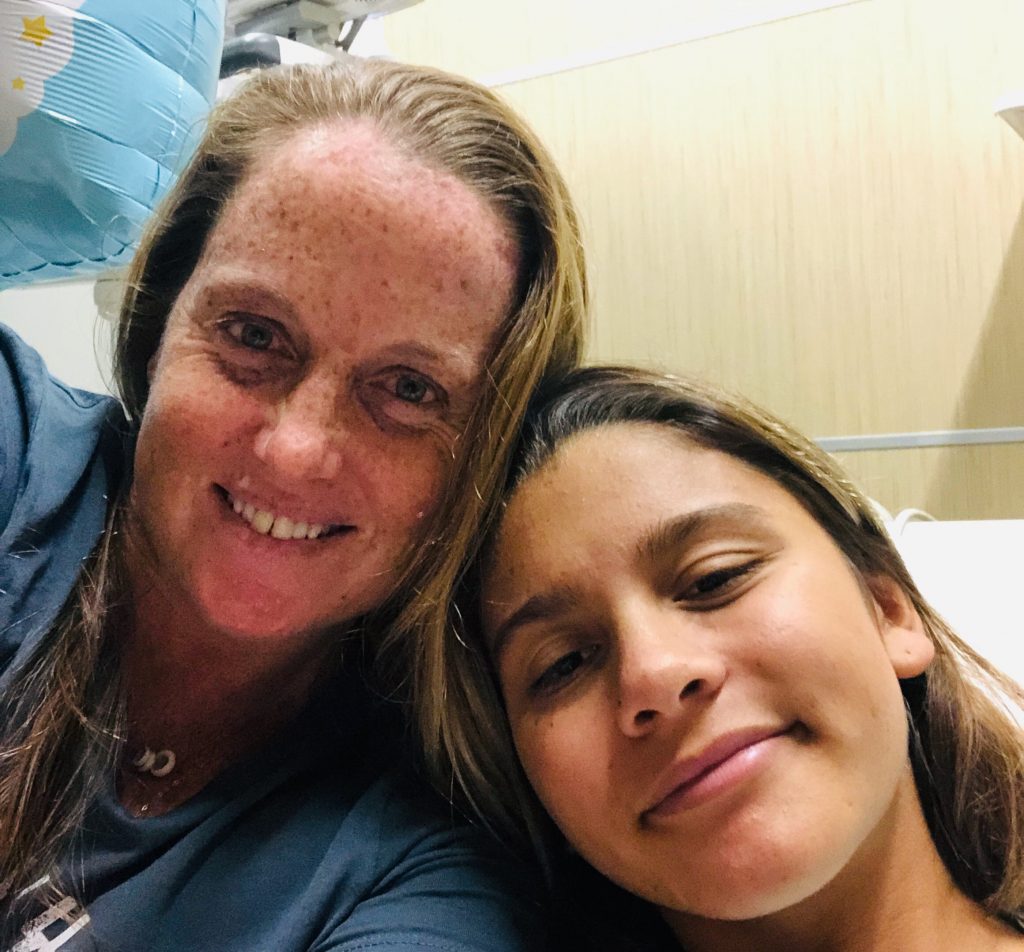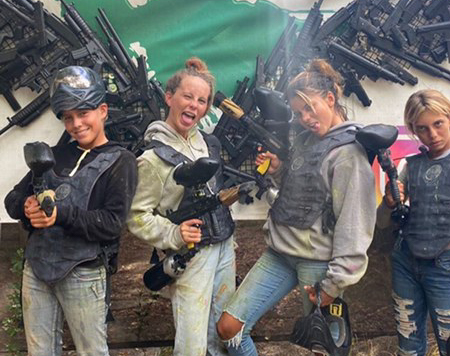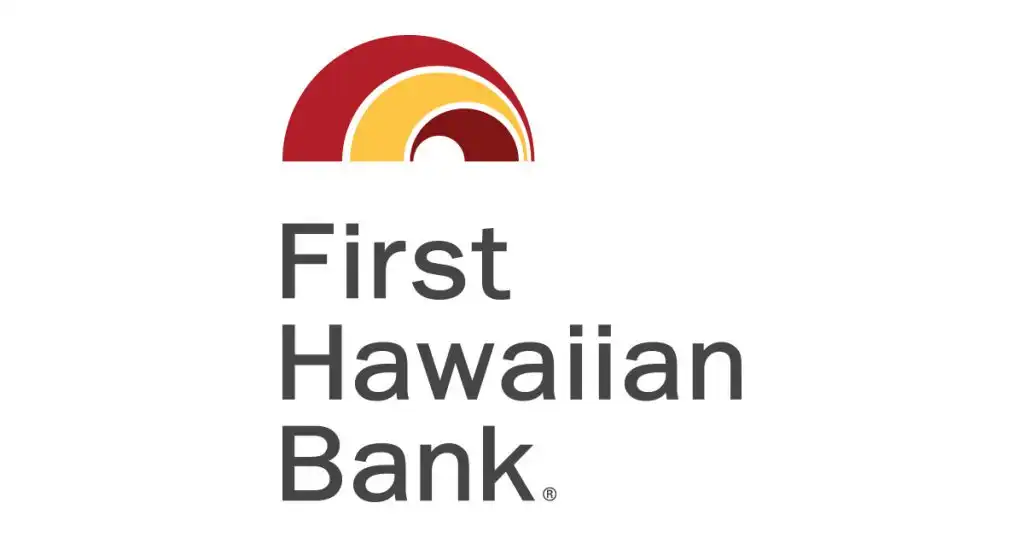A Story With Heart: 14-Year-Old Saved by CPR-Performing Tourist Receives Pacemaker & Bright Future
The sun had set and darkness was arriving fast on Jan. 19 when tourist Ryan Ostrander and his wife saw a teenaged girl dragging another teenaged girl out of the water at a nearly deserted Kahana Beach in West Maui.
“It was odd, but are they playing?” Ostrander wondered until he saw a woman run to help and his wife heard cries to call 9-1-1.
From the balcony of his fifth-floor hotel room, Ostrander sprinted to the stairwell, took the steps two at time, jumped a small seawall and arrived at the beach to find the girl “basically dead.”
“No breathing. No pulse. Really scary,” Ostrander said. “The grandma was terrified.”
The heart had stopped of 14-year-old Naiya Eide, causing her to go unconscious in hip deep water. But the eighth-grader at Lāhainā Intermediate School now is looking forward to a future involving photography, traveling the world and more backflips due to the quick actions of Ostrander, her friend, her grandmother and the ambulance crew.
Wednesday morning, a week after her cardiac arrest, Naiya underwent successful surgery at Straub Medical Center in Honolulu to put in a pacemaker and defibrillator.
“The surgery itself isn’t too major,” Naiya’s mother Missy said. “They float a wire through her vein to her heart and then will have to make a small incision to put in the device under the muscle right below her clavicle.”
Genetic testing revealed that Naiya has had the genetic mutation SCN5A her entire life. It causes the electrical part of her heart to not function properly.
Naiya will have to be on heart medicine the rest of her life, but Missy said it is a small sacrifice to be able to “live a normal active life again.”
It’s a fortunate outcome. According to a 2018 report from the American Heart Association, more than 356,000 out-of-hospital cardiac arrests occur in the United States each year with nearly 90 percent of them fatal.
When cardiac arrest occurs, it is essential to start CPR within two minutes to prevent permanent damage, according to the American Heart Association.
Naiya’s rescuers ensured that happened. Her friend, 14-year-old Kyli Beam, began the life-saving effort by pulling her out of the water. Her grandmother, Andrea Eide, helped and yelled for Kyli to call 9-1-1.
Ostrander arrived about a minute later from the fifth-floor balcony. After a quick assessment of the situation, he began CPR to keep blood pumping from Naiya’s heart to her brain. Serendipitously, Ostrander was on Maui due to the COVID-19 pandemic. He’s a high school teacher from Santa Barbara and was able to take a Hawaiian work vacation during finals week because he could teach remotely.
And even luckier for Naiya, Ostrander had taught CPR for three years to his health class students, although this was the first time he performed chest compressions on a real person and not a mannequin.
An ambulance crew arrived quickly – Ostrander estimated about 4 minutes – and took over performing CPR for another 2 minutes or so before an automated electronic defibrillator was ready. It shocked Naiya’s heart back into its normal rhythm.
Naiya was rushed to Maui Memorial Medical Center, and then airlifted to Kapi’olani Medical Center for Women and Children in Honolulu, where she was hooked up to monitors and treated for eight broken ribs due to all the CPR. Doctors ran tests to figure out why the heart of an active and otherwise healthy girl simply stopped.
On Sunday from the hospital room in Honolulu, Naiya’s mother Missy explained what she knew then: “Naiya had a complete heart block. They said the two chambers in her heart are not communicating to each other. They are not sending signals to each other. But the EKG shows it has nothing to do with the makeup of her heart. Everything is normal. It had developed as it should.
“It’s the electrical wiring of the heart that is not working. The doctors don’t know why; and they are trying to figure it out.”
A few days later they got answers about the genetic mutation.
Before the surgery, Missy joked that Naiya would become the “Bionic Woman.” Then she asked her daughter: “Do you even know who the Bionic Woman is?”
“No,” Naiya responded.
“No? You don’t know her. We’ve got to watch the show,” Missy said about the 1970s TV series about a woman with superhuman bionic powers that was a spinoff of the Six Million Dollar Man.
Leading up to her heart stopping, Naiya had been an active girl. She wrestles, paddle canoes, surfs, skateboards and loves to do back flips. Her mom sent a video showing her doing a backflip into the ocean from a ledge that looked to be 30 feet high.
“She’s always going,” Missy said. “But for the last few months, she was tired and had headaches. I thought she was being a lazy teen.”
Missy said she hadn’t wanted to hear the details of the incident, but Naiya’s grandmother explained that Naiya was pulled out of the water with foam and blood coming out of her mouth.
“She still is pretty emotional about it,” Missy said about Naiya’s grandmother. “She and Naiya are pretty close. That little seawall is their special sunset spot. A lot of the time, she will take my three other kids there, too. I was so happy they were not there this time.”
Naiya said she remembered getting dizzy in the water. The next thing she remember was waking up in the ambulance.
“I was really sad at first, but now I’m grateful everyone was there for me and I can’t wait to go home,” Naiya said.
The morning after the incident, Ostrander got a facetime from an 808 number. It was Naiya and Missy calling to thank him.
Ostrander said while he was confident doing CPR because of the repetition of teaching it, he also was scared not knowing if he was being successful.
“It was weird,” he said. “About every 45 seconds or so she would start to gasp for breath. But 10 or 15 seconds later she would go completely still again. I [later] called a friend who is a doctor and he said it is agonal respirations, and not conscious breathing. But these gasps for breath gave me hope.”
Agonal respirations are a sign that a person still has brain activity. The American Heart Association said when a bystander performs CPR the survivability rate jumps to 45 percent for people who have cardiac arrest outside a hospital.
After the ambulance crew “zapped her back to life,” Ostrander said he was called over to the ambulance and was told: “You saved her life. Great job.” That was when he finally knew Naiya would be alright.
While passing time in the hospital, Missy brought her daughter lime green and red nail polish to keep her busy. There also have been calls, texts, balloons and other well-wishes from friends, family and strangers.
Good family friend Shelby Clark started a GoFundMe account to help with the family’s massive medical expenses. In the first six days, more than 465 donors raised $52,995, surpassing the goal of $50,000.
“For those of you know know her family, know they have already been through some tough times over the last two years,” Clark wrote. Naiya’s dad, Adam, is recovering from a severe ankle injury and medical complications that have kept him from working.
Missy, who owns a “little cleaning business” and works on friend’s boats, said she is “uncomfortable” with the GoFundMe account because “our friends are struggling” and “while we have so many struggles, we have a happy and enjoyable and beautiful life.”
But with 10-year-old identical twin girls and a 6-year-old son also to care for, she said the help is much appreciated.
“I can’t believe all the people who are supporting us financially and emotionally with their prayers,” Missy said. “I was born and raised on the west side. I love the west side. But the whole island is supporting us. We feel so blessed.”
She also feels blessed about Naiya’s rescuers: “I can’t help thinking if it happened elsewhere. That man was right there to give CPR. It could have been a completely different outcome. I know God was looking out every step of the way.”
Naiya will be discharged from the hospital on Friday. She and her mom will stay in Oʻahu for a week until her follow-up appointment, and then will return to Maui.





















